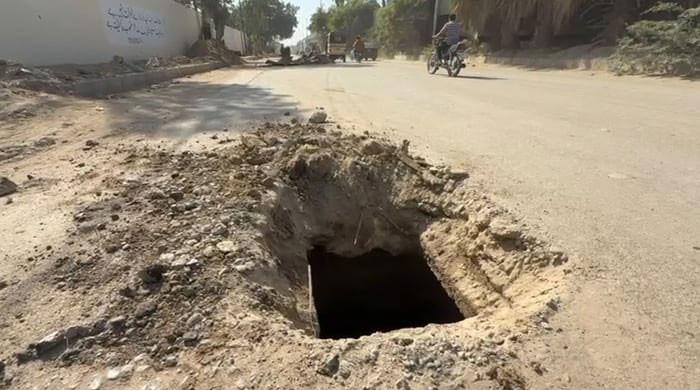Crunching the pension numbers
Pension system in its current form promises predetermined benefits upon retirement without requiring contributions from employees during their service years
July 15, 2024

The pension system in Pakistan has been a topic of debate for over a decade, with questions being asked on policy decisions regarding funding and structural inadequacies in pension management.
The decision in 2009 to include future retirees in pension increments has had a compounding impact on the financial burden faced by the government, meaning that each new pension increment has been applied to an expanding pool of beneficiaries.
While the magnitude of the problem is evident, the politicisation of pensions, both civil and military, poses significant hurdles to any debate on the issue and/or implementing necessary changes.
At present, the pension bill has risen to unsustainable levels, taking up a considerable portion of the government’s revenue and tax income. Over the last five years, the federal pension bill has witnessed a fourfold increase, reaching a staggering Rs1.01 trillion in the fiscal year 2025, indicating a 26% increase from the previous year; at this rate, it would result in an expected annual growth rate of 22-25 per cent over the next 35 years.
The pension system in its current form promises predetermined benefits upon retirement, without requiring contributions from employees during their service years which puts the entire burden of the pension system on the government.
Given the average life expectancy of 67 years and retirement age of 60 years, an assured benefit of 30 years with transfer of benefits to family members post the pensioner’s demise also creates a further burden.
Crucial learnings from international experiences offer efficient solutions that can help build a reliable pension system that is both financially sustainable and socially equitable. For instance, in Sweden, a comprehensive multi-pillar model has been designed to provide financial security in retirement through a blend of public and private contributions.
The first pillar, referred to as income pension, operates on a pay-as-you-go (PAYG) basis, with 18.5% of an individual’s earnings contributed towards their pension.
The benefits from this pillar are calculated by considering the individual’s lifetime earnings alongside a notional account value that is adjusted in accordance with economic growth, ensuring that the pension remains relevant to current economic conditions.
The second pillar, the premium pension, is a mandatory defined contribution scheme. Here, 2.5% of an individual’s earnings are directed into private funds, which the individual selects, allowing for personalised investment strategies. This pillar empowers individuals to have a say in their investment choices, potentially leading to higher returns based on the performance of the chosen funds.
The third pillar consists of voluntary private pension savings, which come with the incentive of tax benefits. This encourages individuals to supplement their mandatory pension contributions with private savings, further securing their financial stability post-retirement.
The Netherlands also boasts a robust multi-pillar pension system designed to provide financial security in retirement. This system is anchored by a universal pay-as-you-go pension scheme funded through payroll taxes, ensuring a flat-rate benefit for all residents from the age of 67.
Complementing this is the mandatory occupational pension, which most employees contribute to; it operates on a collectively defined contribution model, where contributions are collectively pooled and invested, and the benefits are then adjusted according to the fund’s performance.
Additionally, the Dutch system encourages voluntary private pensions by offering tax incentives for personal savings. One of the key strengths of this system is its extensive coverage and the provision of generous benefits.
Lastly, Singapore’s Central Provident Fund (CPF) operates on a mandatory defined contribution scheme. This consists of three primary accounts: the ordinary account (OA), which is utilised for housing, insurance, and investment purposes; the special account (SA), dedicated primarily to retirement savings; and the MediSave account (MA), earmarked for healthcare expenditures.
Both employees and employers contribute to these accounts, with funds being allocated accordingly. These contributions are then invested across a variety of instruments, offering members the autonomy to select their preferred investment avenues.
The CPF system is lauded for fostering substantial national savings rates and ensuring provisions for housing, healthcare, and retirement needs. It underscores the importance of individual responsibility and financial acumen, thus enabling citizens to adeptly manage their personal finances and effectively plan for retirement.
These are some of the various interventions that Pakistan can look towards as it seeks to overhaul its burgeoning pension bill. As things stand, the steady rise in the pension bill is financially unsustainable and takes up a lot of the total income of the country.
The state should look at examples from around the world and come up with a solution that fits Pakistan’s problems, it should seek the help from all stakeholders, including the government, private sector and civil society.
It should look towards a gradual and phased approach to allow for the necessary adjustments and to ensure that the rights and expectations of current and future retirees are respected and met.
Proactive and transparent management of risk, along with a well-designed regulatory framework, are crucial for the health of any pension system. These elements, together with informed investment strategies that deliver safe and sound asset growth, could form the backbone of a reformed and resilient pension system for Pakistan.
The writer is an analyst at Karandaaz Pakistan.
Disclaimer: The viewpoints expressed in this piece are the writer's own and don't necessarily reflect Geo.tv's editorial policy.
Originally published in The News









